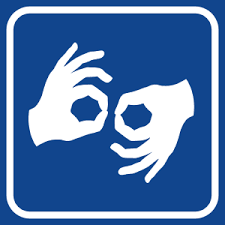Projects awarded in the OPUS 24+LAP/Weave competition

Research on coastal depression and sea level changes, as well as the impact of thermal history on the microstructure and properties of additively manufactured materials, will be carried out by MUT scientists as part of two recent projects awarded in the recently concluded OPUS 24+LAP/Weave competition of the National Science Centre.
OPUS is addressed to researchers at various stages of their careers. In the twenty-fourth edition of the competition, researchers from Polish institutions could apply for funding not only for national projects, but also for international ones based on the Lead Agency Procedure (LAP) path. Thanks to LAP, it was possible to plan the project in cooperation with teams from Austria, the Czech Republic, Slovenia, Germany, Switzerland, Luxembourg or Belgium-Flanders. Tasks carried out by the Polish research teams will be funded by the National Science Centre, and the costs of the foreign research teams will be covered by relevant agencies from Germany, Slovenia, the Czech Republic and Austria.
…
Additive manufacturing as the technology of the future
Scientists from the Faculty of Advanced Technologies and Chemistry will investigate the impact of thermal history on the microstructure and properties of additively manufactured materials. Another project awarded to the Military University of Technology under the OPUS 24+LAP/Weave competition received funding in the amount of PLN 2,544,680.
The project manager, Col. Marek Polański, PhD, DSc, Eng., Associate Professor of the Military University of Technology, points out that additive manufacturing, also known as metal alloy 3D printing, is considered to be the technology of the future. In order to produce the desired component, high-energy-dense radiation sources such as lasers, electron beams or plasma arcs are used to deposit the molten material layer by layer.
„In contrast to subtractive manufacturing, additive manufacturing is highly efficient in terms of material consumption. Unlike casting and forging, it enables the production of complex parts very quickly without investment in tooling such as molds and dies. In recent years, the number of parts manufactured using additive methods has increased significantly, reaching a level that, according to some experts, heralds a new industrial revolution,” emphasizes Col. Polański, professor at the Military University of Technology.
A specific manufacturing process, layer by layer, affects the properties of the entire part, which is heated and cooled hundreds of times during manufacturing, although this happens in a relatively small volume. The aim of the project is to investigate the impact of thermal history on the microstructure and properties of additively manufactured materials. First, a research method based on observation with a thermal imaging camera will be developed, allowing to determine the thermal history of the elements built in their various places. Next, numerical modeling of the additive manufacturing process will be performed. Researchers will investigate the effect of machining parameters on the thermal history of samples, and then the impact of this history on the microstructure and properties of the additively manufactured part. At the last stage of the project, post-process heat treatment will be proposed, the effects of which will be verified experimentally. In order to determine the main differences in the effects of manufacturing medium and large size parts, two additive manufacturing (DED) techniques will be compared – LENS (Laser Engineered Net Shaping) at the Military University of Technology in Warsaw and WAAM (Wire Arc Additive Manufacturing) at the University of Ljubljana.
OPUS24+LAP/Weave call ranking lists
You can find the full article at:
Ewa Jankiewicz
tłumaczenie: Maciej Gontarczyk





